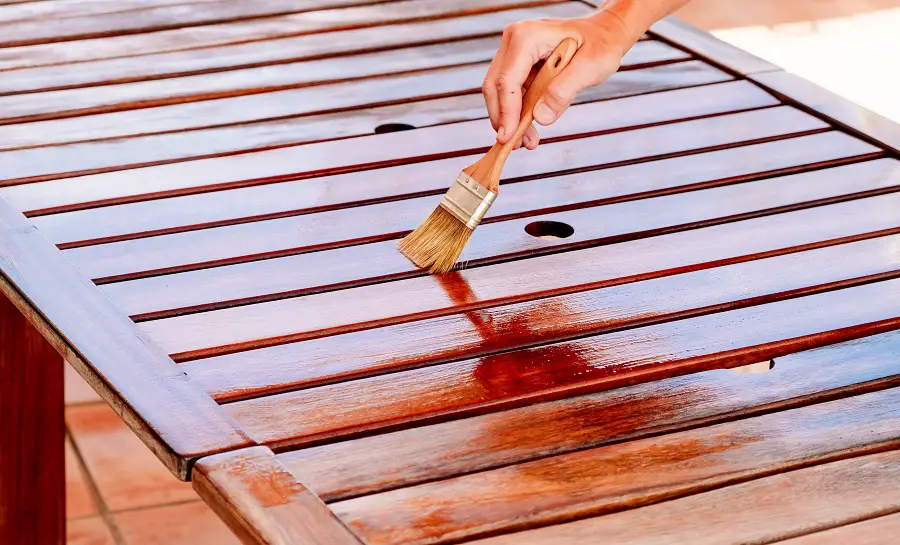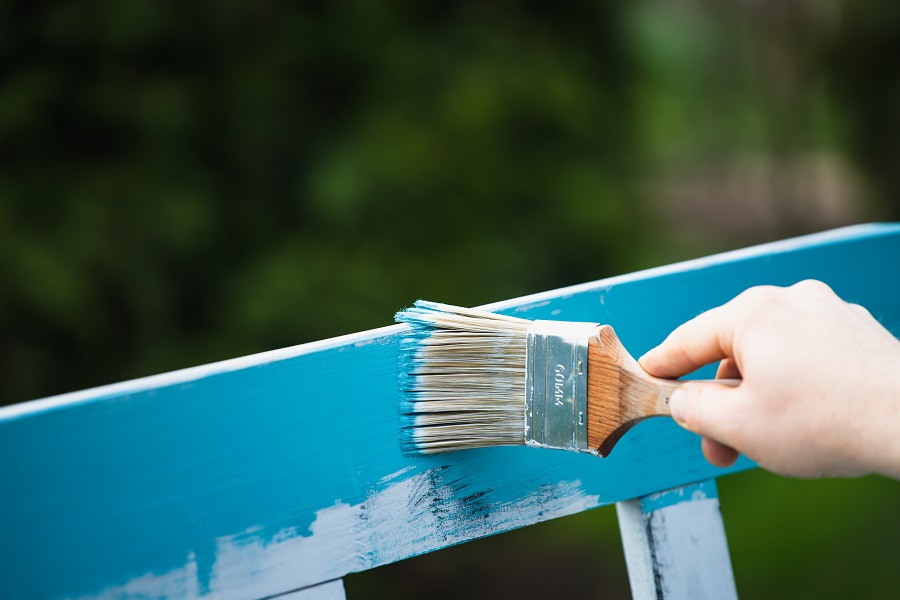Following the article about rebuilding the doors of the church of Pitar Moș, I have received many questions about protecting wood outside. The question that keeps coming up is how to preserve the natural colour of the wood. All exterior materials are semi-transparent or totally opaque, which creates frustration for those who love wood and appreciate its natural look. Unfortunately, a solution has not yet been found to make wood protected with a clear varnish coat stand up to the sun. That's why pigment is added to the varnish. Why it's added and how it helps protect, you'll find out below.

How to protect wood against water, fungi, insects and sun, the main enemies of wood that stands outside
Sooner or later, depending on its strength, unprotected wood on the outside will change colour and rot. Outdoor resistance has nothing to do with toughness. Proof of this is beech wood, which, although a hardwood, is totally non-resistant to the outside. The strength of wood outdoors is ability to resist rotting, i.e. to the attack of fungi and insects that get inside it via water. That's why our concern is to protect the wood so that rainwater doesn't get into it. Let's choose construction solutions that don't allow water to puddle on the wood and, at the same time, allow air to circulate to make it as watertight as possible.
It is the sun that changes the colour of the wood by acting on some of the colouring substances in the wood, which it destroys. The initial colour gradually turns to a bluish grey, regardless of the species. It is not an ugly colour, on the contrary, some even tryto reproduce it with the help of the baths. Not to be confused with that damp, blackish-grey colour that signals the presence of mould on wood. The colour only changes on the surface, and if we remove the grey wood, we will find healthy, clean wood underneath.
The problem occurs when the sun's attack on the wood combines with rain, wind, snow and other such phenomena. The wood on the surface is more brittle because it does not have the same composition as before, and the wind-driven outdoor dust acts as a strong abrasive that easily removes it. This is the profiling of the wood that can be achieved by brushing or sandblast and gradually the wood is getting weaker and more brittle.
Pigments in protective materials protect wood and varnish, oil or paint alike
If we coat the wood with clear varnish or oil, without adding pigments or other substances, we protect the wood from water, but the sun will not be prevented from reaching it. The wood will change colour over time, but it will not be as visible as unprotected wood, because of the wetting effect the varnish and oil have on it. But the wood on top will become more brittle and less resistant. At the slightest crack in the varnish layer, or when the protective oil layer is washed away by the rains, this layer will be damaged much more quickly, with fungi and insects attacking it more easily.
The role of the pigments added to these products is to sit in the path of the sun's rays and reflect or deflect them. Unlike dyes, which dissolve in the solvent of varnish or oil, pigments colour by remaining as particles floating in the solvent. These solid particles are hit by the sun's rays and are reflected, protecting the surface of the wood.
Pigments protect the lake or oil because they prevent it from overheating. The high temperatures produced by the sun's rays cause the resins to age faster and the lake becomes more fragile, gradually losing its protective properties. The same temperatures make the oils more fluid and the rain washes them away more easily. Without the addition of pigments, outdoor varnishes and oils have a shorter life than those with pigments, and will need to be refinished more often. This is the case with linseed oil protection, which is recommended to be refreshed annually, even every 6 months if the weather has been wet.
Paints hold up best, glossy varnishes least
The higher the pigment content, the better the protection because more of the sun's radiation is reflected. Even if you really appreciate the look of wood, the prospect of having to paint the wood panelling on your house every year is not the most pleasant. That's why the pigment content has been increasing, making transparent outdoor products ... semi-transparent. It's a compromise to have good durability over time, without totally sacrificing the beauty of the wood. The best resistance over time is with paints, which have the highest pigment content, the wood is completely covered.

Lacquers/paints are more durable the more matt they are. A material called flattering agent. They are small particles with a certain geometry that sit in the path of the sun's rays and deflect them. The greater the amount of deflected radiation, the duller the lake. However, the deflection also helps to increase outdoor resistance because the sun's rays no longer reach the wood and the temperature in the lake no longer rises. In glossy lakes there is no matting agent, the sun's rays can heat the wood and the lake unhindered.
Surface burning of wood, a method of outdoor protection
A commonly used method of protection in the countryside is surface burning of wood, followed by oiling. It's an old and cheap method that not only we use. Shou Sugi Ban is a Japanese method of protecting outdoor wood by burning followed by sudden cooling. Repeating the process several times results in a layer of charcoal forming on the surface of the wood, making it highly resistant to rotting. With this method, the wood's outdoor resistance can be over 100 years.
We don't have such a deep burn. The shallow burn forms a black soot which is actually a pigment called carbon black. It contributes to the strength of the wood outside. Burning also brings out the wood's pattern, and the method also has a staining effect. The pattern of the resinous wood is best highlighted in this way. If brushing is also done after burning, the wood is profiled. Burning is followed by oiling to protect the wood and against water. The more the wood is burnt, the better its resistance to the outside will be.
I hope you find the information interesting. If you have also protected wood by burning, please share your experience with us. And if you have any questions or queries, please leave them in the space below. I'm sure I'll answer them.



























Hello, I have a project at college where I have to do at least 3-4 operations on wood that will highlight the nature of the wood and I am looking for information on what I could do, if you can help me.
Hello!
If it is about highlighting the structure of the wood (its natural design), it can be done by sanding, brushing, sandblasting, staining, patination. By sanding, brushing or sandblasting, some of the early wood is removed, giving the wood a 3D appearance. It is very visible when the cut is tangential to the annual ring (flader, cathedral).
By staining, the wood design is highlighted due to different absorption. Early wood usually absorbs more than late wood. Using simple water-based stains the effect is best highlighted.
With the help of skids, the pores of the wood can be highlighted. By using special heavier staining materials that fall into the pores or staining methods that push the colour into the pores (erasing), the pores are stained and become very visible.
Below is a link that may be helpful. It is about this very subject. In the article you will find links to articles that elaborate on one method or another.
If I didn't get it right or you need more information you can write me on mihaela.radu@cesbrands.ro
Good luck!
https://revistadinlemn.ro/2023/07/06/cum-se-scoate-in-evidenta-desenul-si-structura-lemnului/